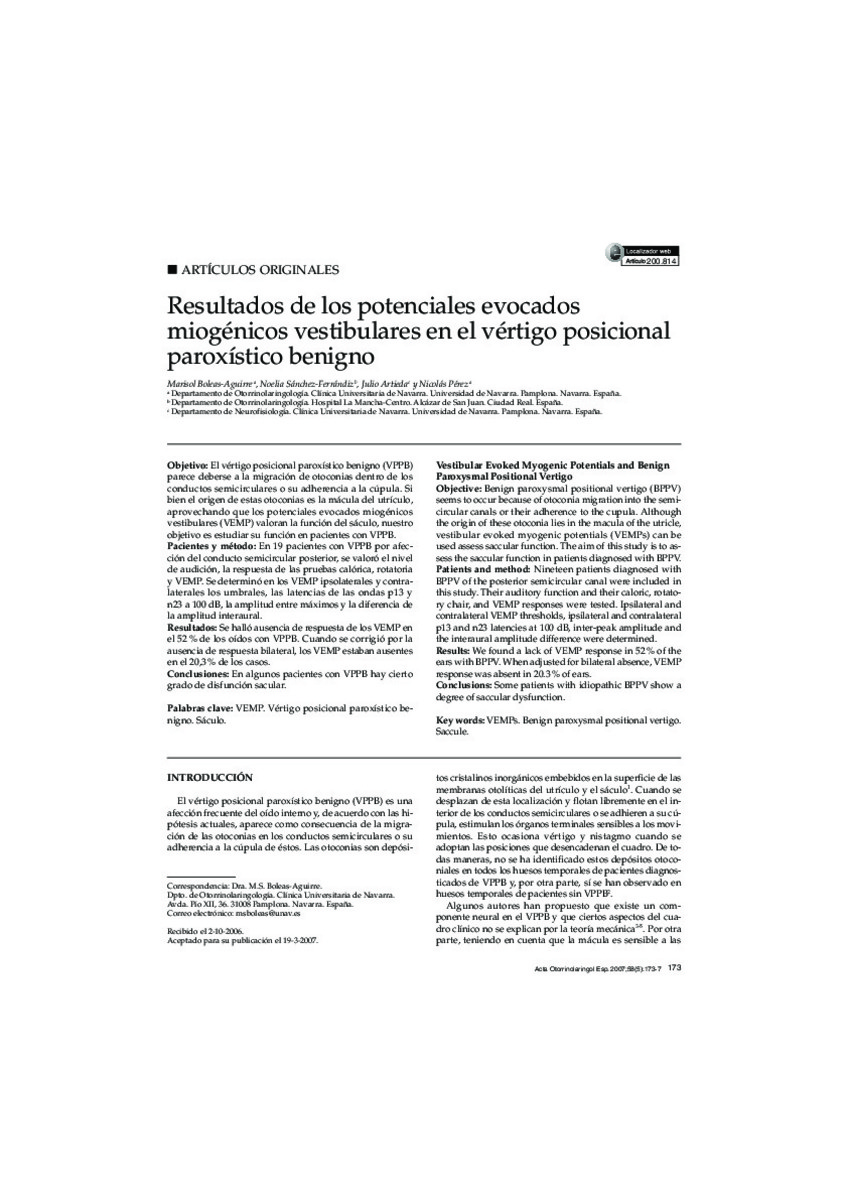Resultados de los potenciales evocados miogénicos vestibulares en el vértigo posicional paroxístico benigno
Otros títulos :
Vestibular Evoked Myogenic Potentials and Benign Paroxysmal Positional Vertigo
Palabras clave :
VEMPs.
Benign paroxysmal positional vertigo.
Saccule.
Fecha de publicación :
2007
Cita:
Boleas-Aguirre M, Sanchez-Ferrandiz N, Artieda J, Perez N. Vestibular evoked myogenic potentials and benign paroxysmal positional vertigo. Acta Otorrinolaringol Esp 2007 May;58(5):173-177.
Aparece en las colecciones:
Estadísticas e impacto
0 citas en

0 citas en

Los ítems de Dadun están protegidos por copyright, con todos los derechos reservados, a menos que se indique lo contrario.









